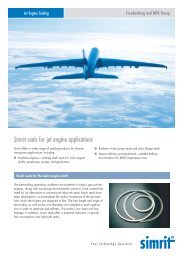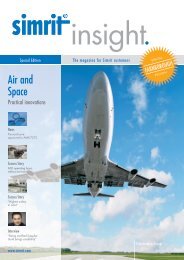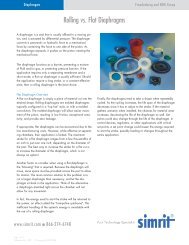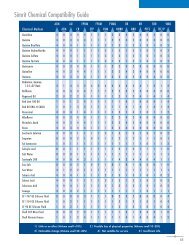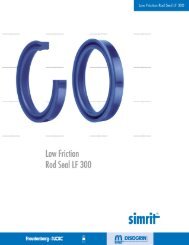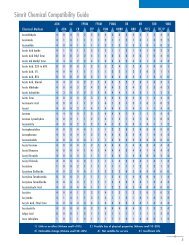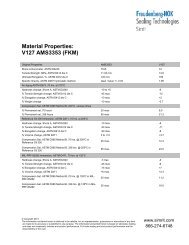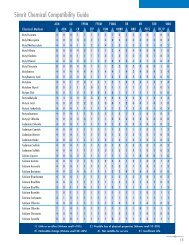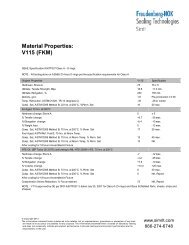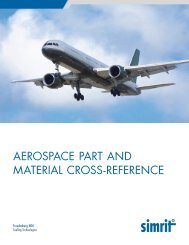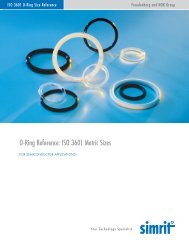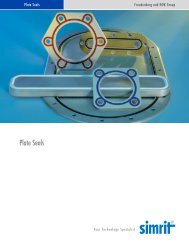Diaphragm Design Manual - Simrit
Diaphragm Design Manual - Simrit
Diaphragm Design Manual - Simrit
You also want an ePaper? Increase the reach of your titles
YUMPU automatically turns print PDFs into web optimized ePapers that Google loves.
The Care and Housing of <strong>Diaphragm</strong>sAs noted in the manual’s introduction, the hardware that captures and surrounds the diaphragm is asimportant to the success of the application as the elastomer, fabric, and geometry. These surrounding ormating parts must be compatible with the diaphragm in every way; otherwise performance and cycle lifewill suffer.First and foremost all hardware that contacts the diaphragm must be as smooth as possible and burr free(see the section on Enhancements for Improving Stroke Life).The second most important requirement is that all mating hardware match the diaphragm’s geometryand capture it in such a way as not to distort it while allowing for free movement of the convolution. Anyinduced distortion in the diaphragm can affect the rolling action of the convolution, add additionalstresses or create wrinkles.Figure 16 – A Typical Deep-Draw <strong>Diaphragm</strong> Assembly with a Return Spring and Positive StopTo minimize distortion during assembly, some consideration should be given to using jigs and fixtures tocompress return and / or balance springs, align housing halves and support the diaphragm. One methodof rendering support to the diaphragm during assembly would be to inflate it with a steady stream oflow-pressure air.If the method of housing assembly includes screwing one piece of hardware into another with thediaphragm captured between them, some form of thrust washer should be considered to eliminate anytwist or wrinkling.This hardware and assembly discussion is further expanded on in the section titled Flange Sealing.Transition RadiiThe transition radii are the features on the diaphragm that help define the shape of theconvolution by connecting it to the flange and the piston surfaces. For all practical purposesthese radii should never be less than .015”.© Copyright FNGP 200935



